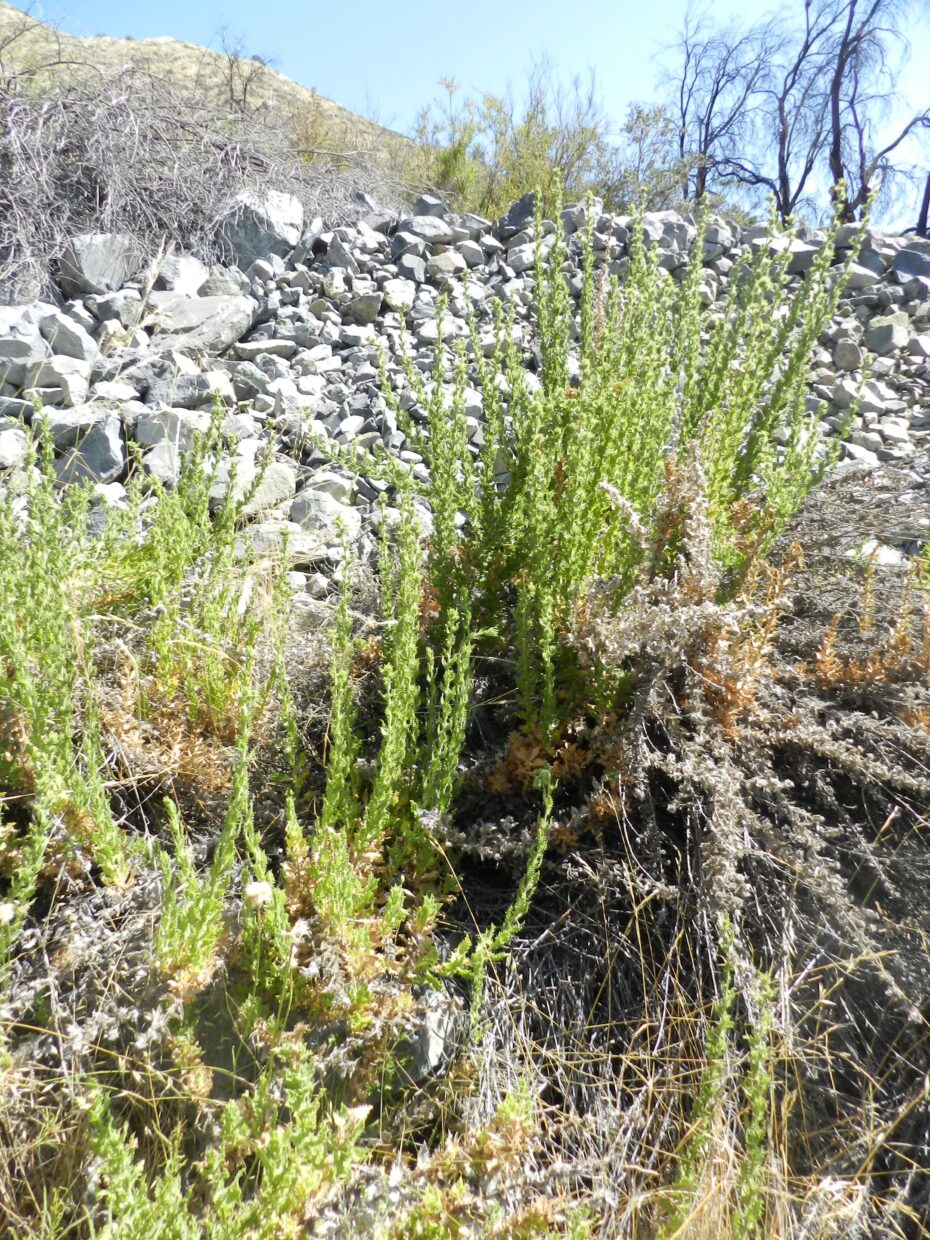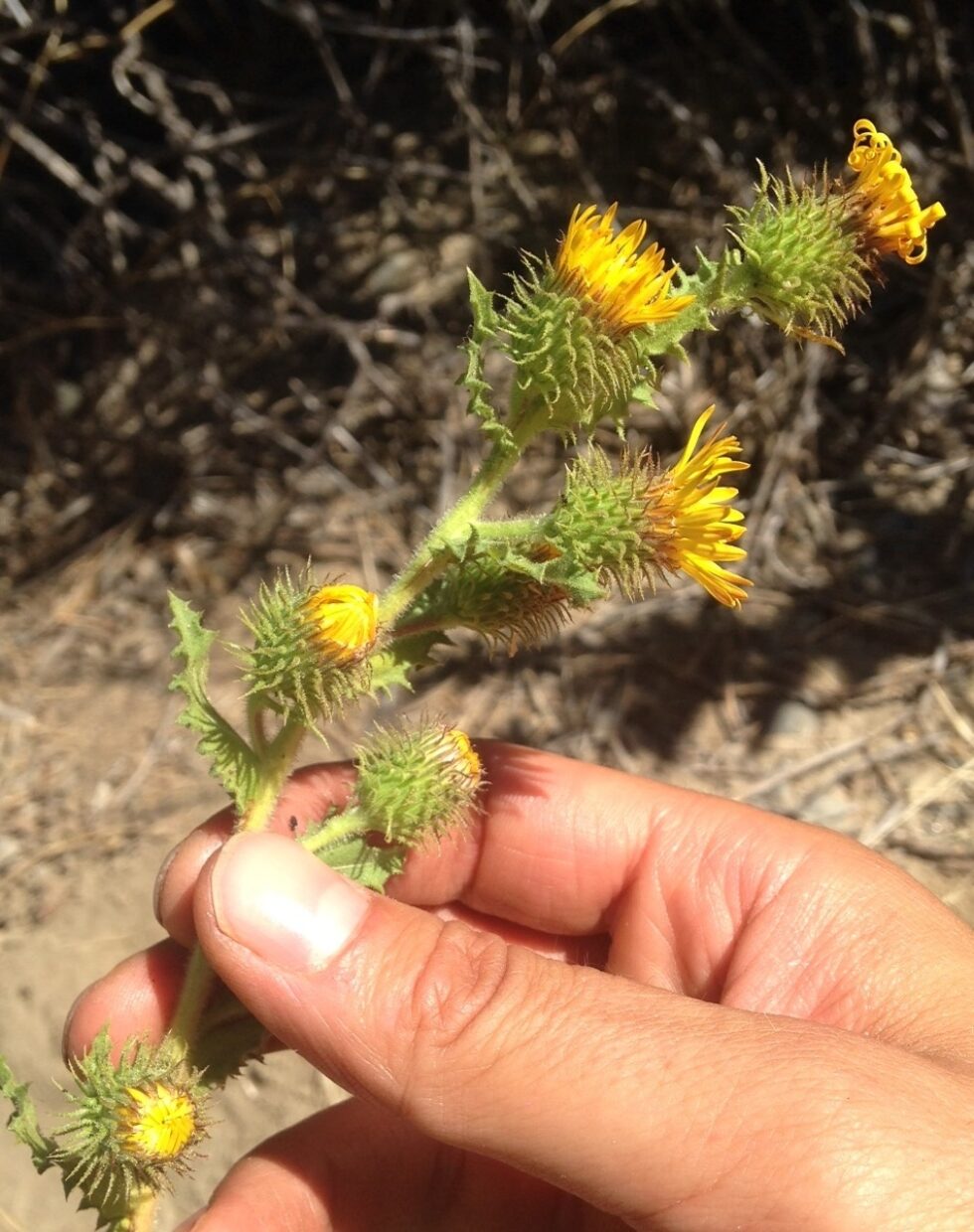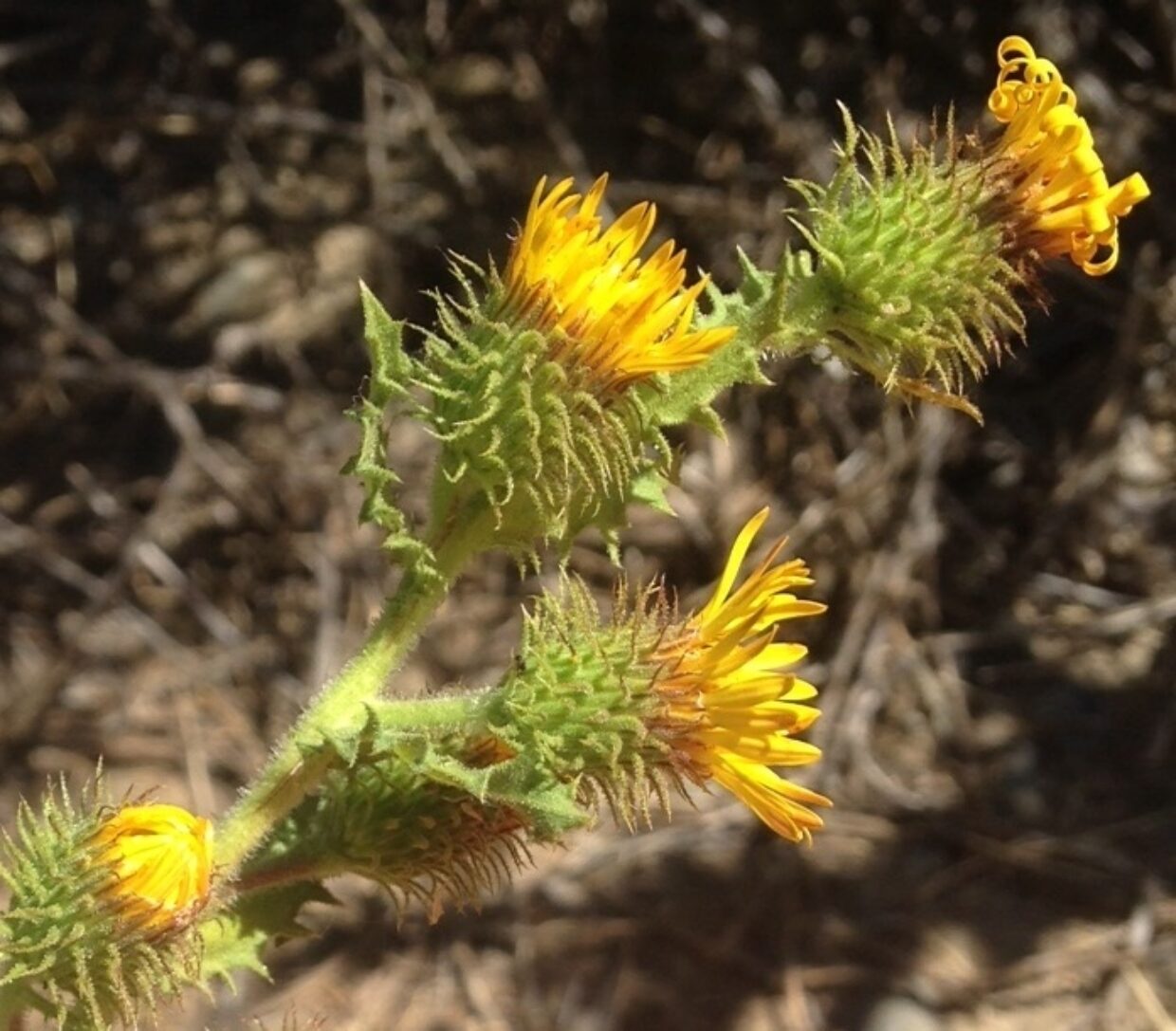Type citation
Chile Region de Coquimbo: Provincia de Choapoa, entre los Fundos Tipay y El Romero, cerro Campanario, 1202 m, 32°0'33"S, 71°6'59"W, 8 February 2016, P. Medina 3393 (holotype EIF!; isotypes SGO!, CONC!, SI!, MO!).
References
-
García et al. (2018)
García, N.
,
Medina, P.
and
Morales, V.
2018. Haplopappus mieresii sp. nov. (Asteraceae) and the reinstatement of H. reicheanus from central Chile. Phytotaxa 376(2): 103–113
Iconography
- García et al. (2018): Fig. 1, 2.
Regions
Coquimbo
Distribution and habitat
Restricted distribution in the region of Coquimbo where it is most frequent in the middle portion of the Choapa river basin between the localities of Aucó (31°30’S) and Culimo (32°4’S). It also has tow localities in the province of Limarí. It grows on shady, south to south-west facing slopes with sclerophyllous vegetation at elevations of between 400–1600 m above sea level. The associated species can include Acacia caven, Colliguaja odorifera, Lithraea caustica and Quillaja saponaria (Garcia et al.).
Descriptions
Habit
Evergreen shrub 0.8–1 m.
Key characteristics
This species is similar to H. ochagavianus, but differs by its ascending to erect habit (vs. decumbent), height of between 0.8 to 1.7 m (vs. 0.1 to 0.5 m), leaves mostly lanceolate to oblanceolate (vs. obovate to suborbicular), leaf apex acute to acuminate (vs. obtuse to rounded). the inflorescence is composed of four or more heads whereas in O. ochagavianus there are only one or two (García 2018).








